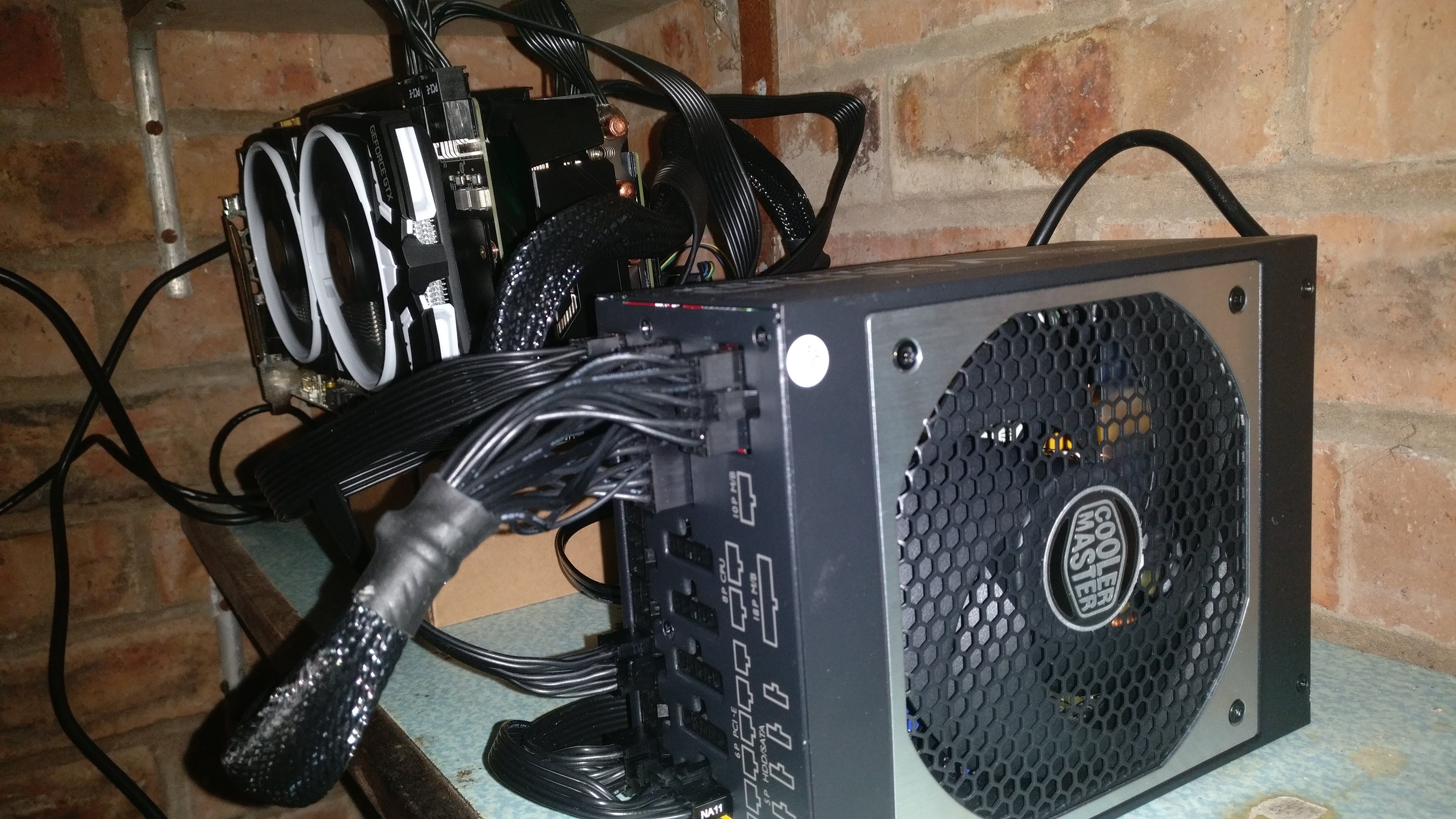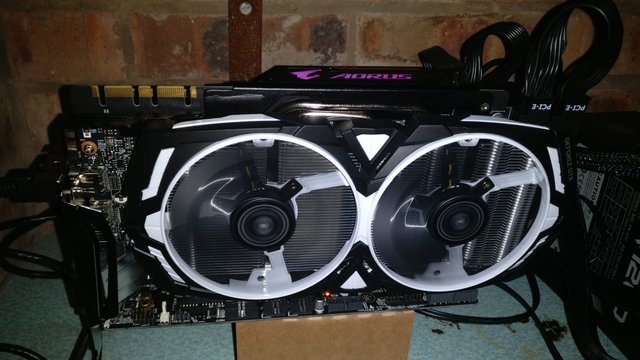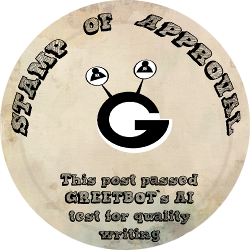My Mining Adventure
A few of you have asked about my mining experience, so I thought I’d document it here. It has the potential to be a nice little earner, and if anything has proved to be a nice departure from staring at bleeding charts today.

The parts
After researching how to make a mining rig I went to www.scan.co.uk and ordered the following parts:
- 1200W Cooler Master Vanguard PSU
- 4GB Corsair DDR4 Value Select, PC4-17000 (2133) Desktop Memory
- Intel Pentium G4600, 1151, Kaby Lake, Dual Core, 4 Thread, 3.6GHz, 3MB Cache, 1100MHz GPU
- ASUS PRIME H270M-PLUS Motherboard
- Gigabyte AORUS GeForce GTX 1080 Ti 11GB Graphics Card
- MSI GeForce GTX 1080 Ti ARMOR OC 11GB Graphics Card
I used scan.co.uk because they were they only suitable provider in the UK that accepted Bitcoin, meaning I got the whole thing effectively for free seeing as this was Bitcoin I had gained through investing. I’ve built computers many times in the past so this was nothing new.
The money went on the graphics cards, the PSU and the motherboard – the RAM and the CPU are the cheapest I could find as they don’t matter much to the running of a miner. The whole setup cost £1912, and paying through Bitpay was by and large fairly painless and quick (total tx fees were about £24). The rig is basically a computer without the case, so it was very easy for me to set up. The graphics cards are absolute beasts and heavy as hell – I’ve never known anything like it. I already had an SSD lying around so I used that for Windows etc. I encountered a slight problem when I realised I hadn’t bought a power button (well you wouldn’t think to, would you?!) but I managed to start it using a flathead screwdriver on the relevant pins. Everything whirred and bleeped ok, so it was time to install some software.

Testing
I installed Windows 10 and performed the usual updates and anti-virus bits, but otherwise decided to keep the installation as clean and minimal as possible. I decided to use LUX Coin as my test coin (full disclosure, I had already tried mining some weeks ago and so knew how LUX worked), so I downloaded ccminer and the LUX wallet and set the miner to work. Pleasingly it worked straight away with both cards clocking up about 30 MH/s on default settings. A bit of online digging revealed a LUX-specific version of ccminer and some overclocking suggestions using MSI Afterburner. I enabled these and ran it again, managing to get an extra 5 MH/s each out of the cards, therefore running a healthy 70 MH/s. The heat the cards generated was incredible, and for my overnight test in the study I had to leave the window open even though it was -1 outside! The wife was not happy. In the morning I was pleased to see it was all running nicely, if still quite hot, so I decided the time was right move it to its permanent home – the garage.

Hi ho, hi ho…
My reasoning for locating the miner in the garage was two-fold: firstly the temperature, given the large space, absence of central heating and constant flow of cool air, and secondly to keep it out of the way of my inquisitive children. The question of monitoring was easily answered by the purchasing of a powerline ethernet plug for £40 from Amazon, allowing me a consistent internet connection, essential for pool mining and allowing me to control the rig through Teamviewer, which is free for personal use.
The miner worked fine in its new home and has been mining more or less happily (barring one overnight stoppage) for several days. The temperature differences have been amazing – the PSU fan hasn’t operated once and the front graphics card fan only ever runs at about 50%. I wedged a 1cm plastic HDMI cap between the two cards to increase the airflow a little, which helped the other card which isn’t as exposed to the air.
With everything running as intended the next stage was to work out the running costs. Many years ago I bought a device that does just that for any electrical appliance, and after an hour’s testing it showed nearly £400 per year running costs in electricity. All these figures are important seeing as at this stage I had no idea if the whole enterprise was actually going to be profitable or not.
What to mine
This took a bit of research, calculating and testing. Initially I was searching forums for newer coins that hadn’t caught on and therefore were easier to mine and might have a bright future, with the idea of getting my hands on a masternode cheap. However, the results were disappointing – I would only be able to generate 1-2 of these kinds of coins a day and a masternode is at least 1,000 for these kinds of coins. This might not be bad over an extended period you might think, but the downside was they were only on crappy exchanges with no buyers and I didn’t want to be mining something for weeks on end that might never have any buyers. Essentially it was a case of masternode or bust, so I went back to my trusty LUX to see how that would treat me.
The Bottom Line
After running some tests and considering where the coin could go, I was pleasantly impressed:

So given the £2000 outlay and the £400 per year running costs, and saying LUX hovers around $50 all year (it hit $50 before the recent crash), I would still be something like £7000 to the good by year's end. Of course the difficulty might go up as the year goes on, but I still think it will have been well worth doing. I'm considering adding another card to the setup via a USB riser, but for now I'm more than happy with how things have worked out.
So there you go. If you have a spare couple of grand (or the relevant BTC), a well ventilated space with an internet connection and knowledge of building computers, don your hard hat and pickaxe and chisel away. It really isn't that hard.
I don't know what all the fuss was about.
good luck for mining!
Hi. I am @greetbot - a bot that uses AI to look for newbies who write good content!

Your post was approved by me. As reward it will be resteemed by a resteeming service.
Resteemed by @resteembot! Good Luck!
The resteem was paid by @greetbot
Curious?
The @resteembot's introduction post
Get more from @resteembot with the #resteembotsentme initiative
Check out the great posts I already resteemed.
nice stuff as always, but I think you could make an Excel-type of table to summarize all the costs ;-)